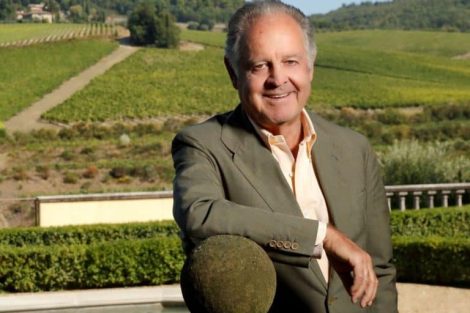San Sebastian Goe
“A building is just a building”, said on stage of Identità Golose Joxe Mari Aizega, presenting the new project designed for the Basque Culinary Centre that - after its decade life span - is preparing to make a further leap forward, with the style and foresight it's known for. Aizega, who is the general manager and visionary animator, described GOe, Gastronomy Open ecosystem, the new structure, the result of collaboration between public and private entities, which will be born in San Sebastián, increasingly the epicentre of world gastronomy, where the future is imagined and created. A place is only a place, therefore, for a structure that stands in dialogue with the outside world, and that already with its name claims to be an open ecosystem. It is no coincidence that, while the BCC is located on the edge of the Basque town, GOe occupies an urban area, within the old technological park: city within the city universe world of gastronomy where connections, collaborations, data movement, ideas, people and professionalism are founding elements.
The architecture
The Basques, who apparently know how to capitalise on goods, values and potential, have well understood the impact of great architecture in the city scene since, just 25 years ago, the Guggenheim Museum literally transformed the perception of Bilbao and the entire region, projecting it forcefully into the international cultural scene. The merit then was the sinuous titanium structure by Frank Owen Gehry, able to attract tourists and capitals from all over the world and where today (and it is not a coincidence) is home to the restaurant Nerua of Josean Alija.
Then, in 2011, the Basque Culinary Centre arrived in Miramòn just outside Donostia, with that iconic architecture designed by Vaumm studio that recalls a stack of dishes, which integrates academic, practical and research functions in a project born from a think tank of the major chefs of the world: "a cooking school did not seem enough" says Aizega "we began to understand the sector. For me it was clear that cuisine was at the centre but it was much more". The creation of a non-profit Foundation aimed to promote the development of gastronomy, with an active non-reactive attitude, and a holistic vision, passing, as Aizega says, first from cooking to gastronomy, and now from gastronomy to gastronomy 360, "Last year, after 10 years, we wondered if this was the right way, and we said yes". From there it was decided to relaunch, with a project of equal impact for the city and for the gastronomic culture.
An international competition was held in December 2021, which saw the participation of the most important architectural firms in the world then slimmed down to a shortlist of 5 finalists: 3xn (Denmark), OMA (Office of Metropolitan Architecture, The Netherlands), Snơhetta (Norway) and Toyo Ito & Associates (Japan) and BIG (Bjarke Ingels Group, Denmark) which won the tender for the ability of "clearly reflecting the mission of GOe to innovate and explore the limits of gastronomy with the aim of paving the way for gastronomy in a collaborative way".
GOe and the winning project
To Bjarke Ingels we owe, among other things, the new Noma by René Redzepi, the Flagship Factory campus S. Pellegrino in the Brembana valley, and the first virtual office designed in the metaverse for the employees of the Vice Media Group. And now signature Olatuen bidea - Camino de las Ola (and its silhouette clearly explains why), which won the competition "for its unique architectural qualities, for its organic integration in the surrounding environment and because it improves the surrounding public spaces by equipping them with its own activities and character, thus generating new spaces of interaction and relationship for the community" a project where, of course, the values of sustainability and care for the landscape are in the foreground, but which is also characterised by the versatility of the spaces and functionality capable of responding to the "changing needs" of the new centre.
The space is intended as a place of aggregation for the community, offering new environments for social life, culture, research and cuisine, where gastronomy and the city can meet and interact, with open terraces connecting the internal activity of the building with the external public; "we believe that this architectural fusion of gastronomy and technology, city and landscape, building and park has the potential to become a destination in its own right for culinary pilgrims from all over the world", said Bjarke Ingels, who in designing the centre referred to the Pilgrim’s Way to Santiago, the sculptures of Eduardo Chillida in Donostia and flysch rock formations, incorporating the building materials characteristic of the region. The roof becomes an extension of the mountains surrounding the city, the creation of a new square on Navarre Avenue encourages interaction, while a market explains the concept of the from farm to table also in the context of the gastronomic avant-garde: the local products will be presented here and then used in an innovative way in the kitchens, classrooms and laboratories showcase throughout the building, and then be served at the restaurant. Now that the winning project has been identified, it is expected to be completed by the end of 2024.
What is GOe: Gastronomy Open Ecosystem
GOe combines spaces for teaching, research, innovation laboratories for companies, spaces for events and conferences, a large area for flexible and open coworking, with the awareness of the importance of prolific and serious dialogue with the business world. So the new structure wants to establish itself as a reference point for professionals but also as a place enjoyed by the citizens, the population that during these 10 years has been able to weave direct relations with the Basque that, far from being a desert cathedral, has always been experienced also by the population "we have learned the importance of being in the city, we know how important it is to be there" said Aizega a month ago, anticipating how GOe will be a public space in full interaction with the city, also thanks to an architecture with open terraces that encourage dialogue with the city, providing spaces that enrich the surrounding urban environment. Designed to host research, innovation, experimentation, entrepreneurship and postgraduate training activities in the field of gastronomy. In short: "GOe will bring together a unique brand of talent."
Having a home is important, but having a community is even more important. A community that increasingly looks to the Basque Culinary Centre as a reference point for gastronomic research, food reflection in a multicultural landscape among the most advanced and prolific in the world, which has in its Dna the ability to think about interdisciplinary gastronomy. The creation of this new home of gastronomic culture is the natural consequence of a project that has evolved over time and that has been able to combine high catering, research, business, communication and commitment in society, with the Basque Culinary World Prize that rewards with 100 thousand euros initiatives that have a positive impact on society through gastronomy (last year awarded Xanty Elias and even before José Andrés). It’s just one of the projects, "we work so much on young talent and not only on our students, we try to train people with knowledge and skills but also people with aptitude," the June 50 Next goes in this direction, with the selection of 50 young talents from all over the world in different sectors, "gastronomy is a sector of many sectors, there are many things inside that open many interesting opportunities". And the new era of the Basque Culinary Centre is one of them.
by Antonella De Santis


 The Game (and the misunderstanding) of dealcoholised wines: even an expert critic can be fooled at first sip
The Game (and the misunderstanding) of dealcoholised wines: even an expert critic can be fooled at first sip With fish, you can (also) drink red!
With fish, you can (also) drink red! The story of the pharmacist who dispenses prescriptions by day and crafts gourmet burgers by night
The story of the pharmacist who dispenses prescriptions by day and crafts gourmet burgers by night It's time for light Prosecco: the lower-alcohol version is the latest innovation in record-breaking bubbles
It's time for light Prosecco: the lower-alcohol version is the latest innovation in record-breaking bubbles "Biodynamic preparations ave no effect on viticulture": The shocking conclusions of a Swiss study
"Biodynamic preparations ave no effect on viticulture": The shocking conclusions of a Swiss study






